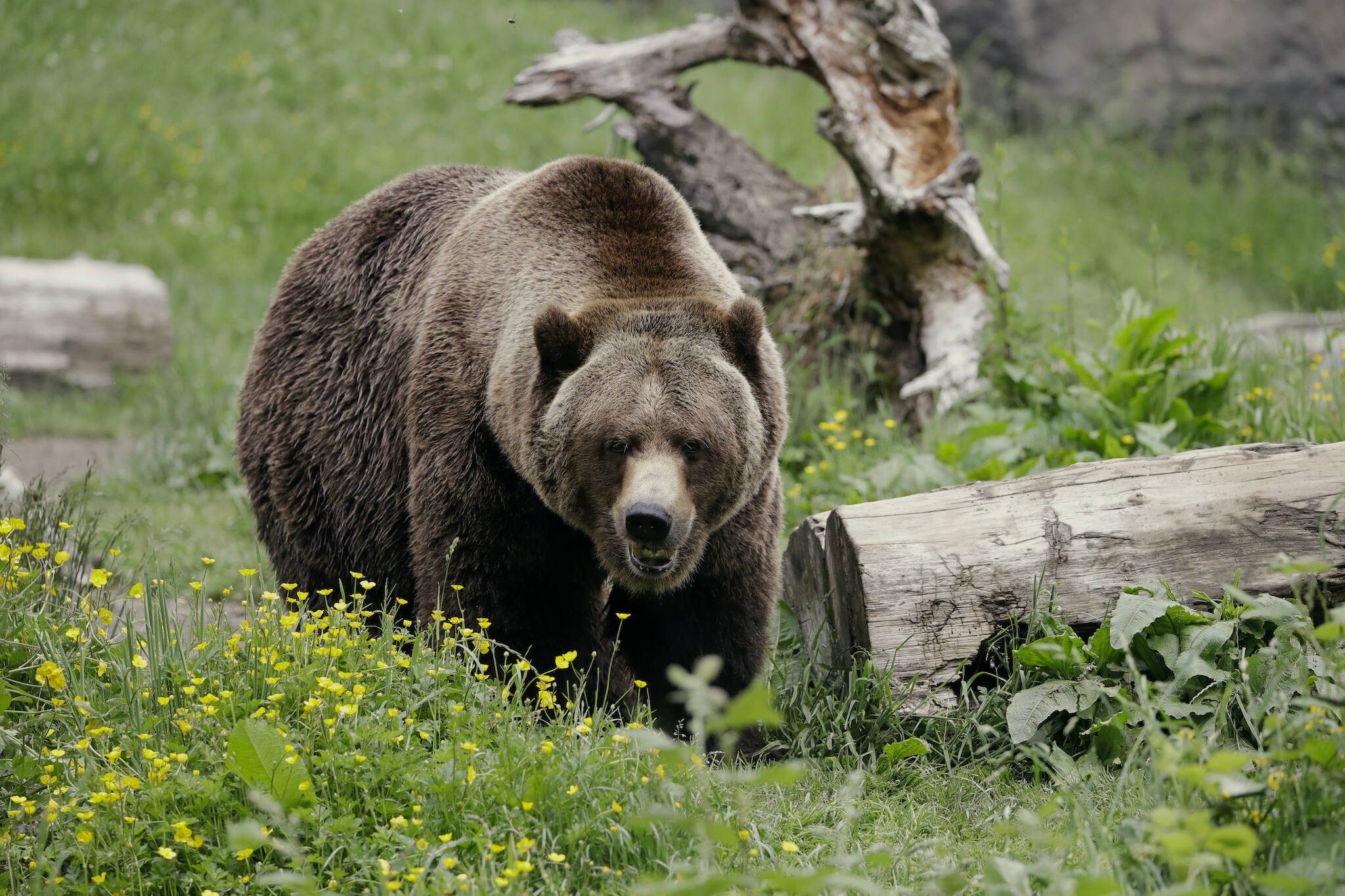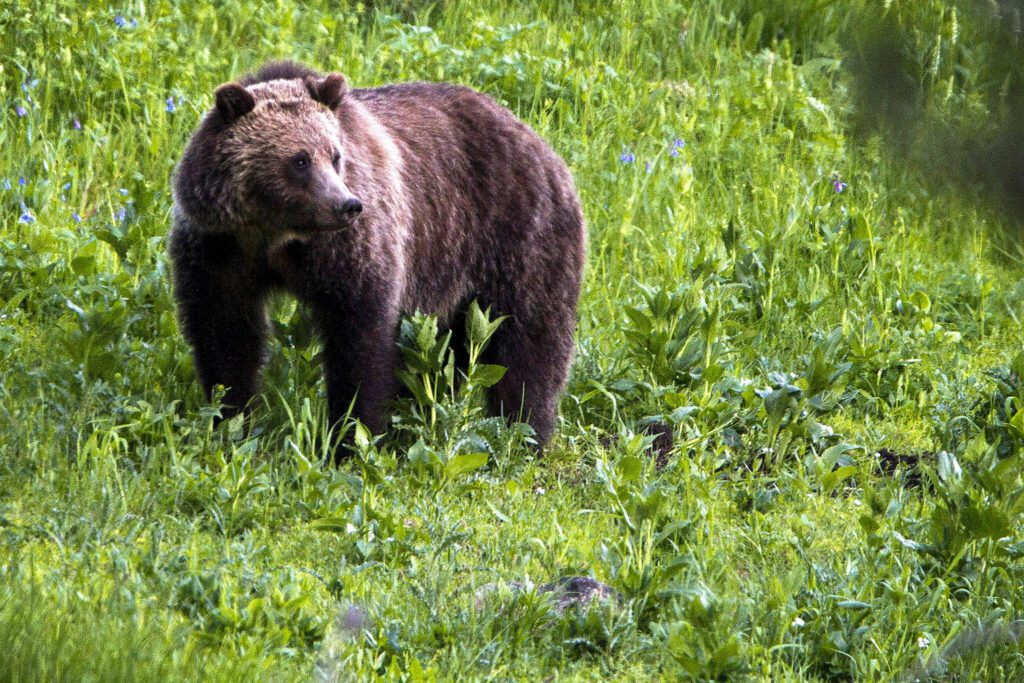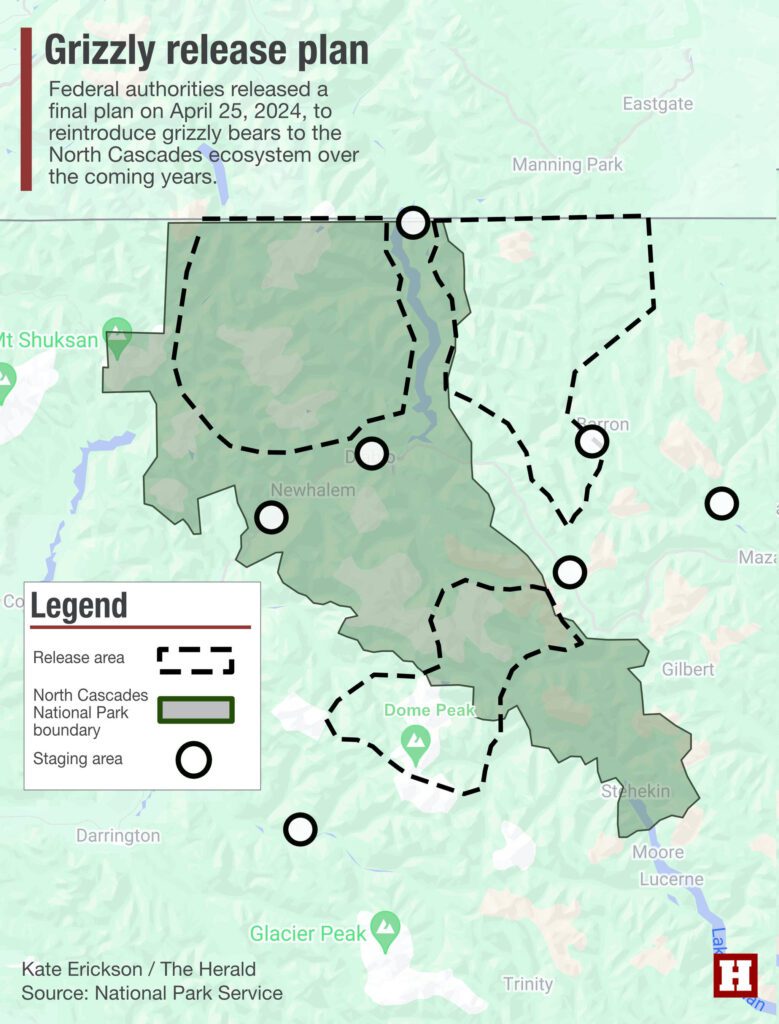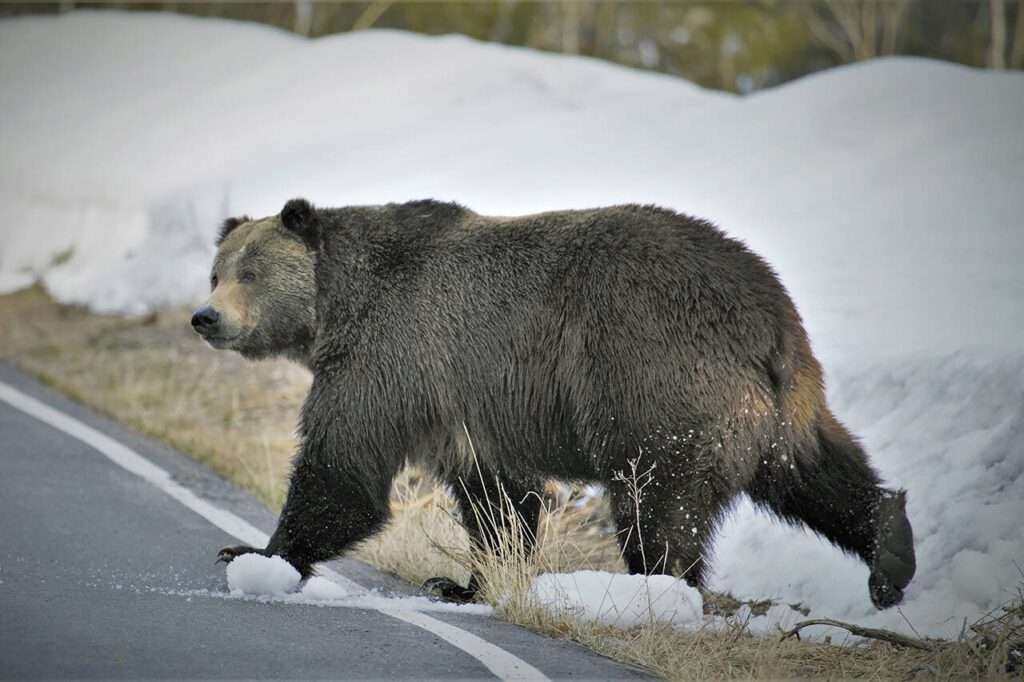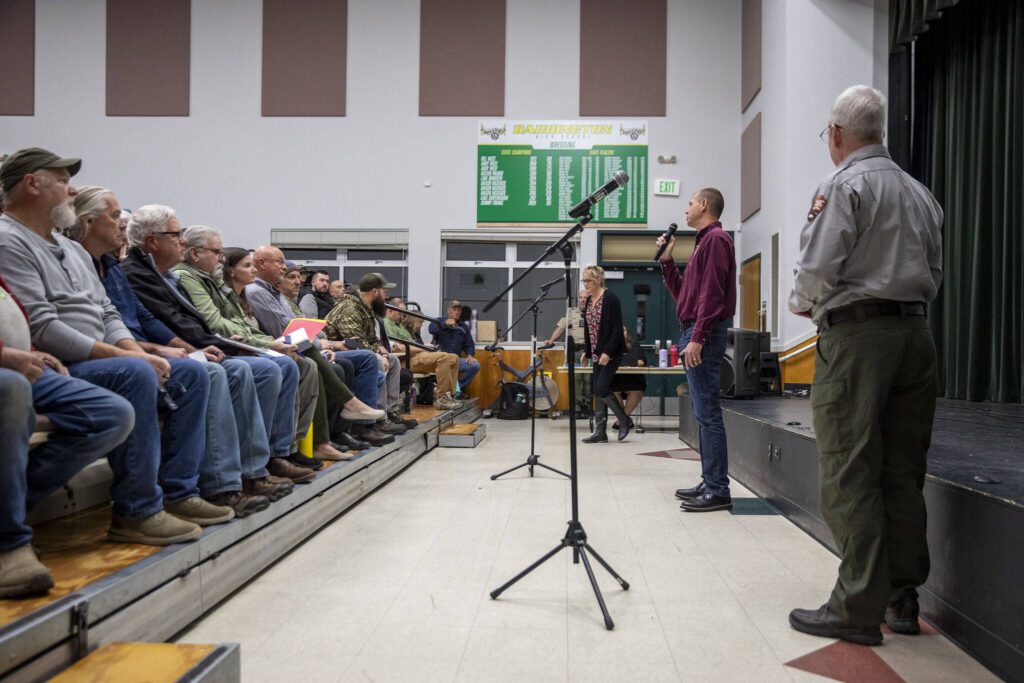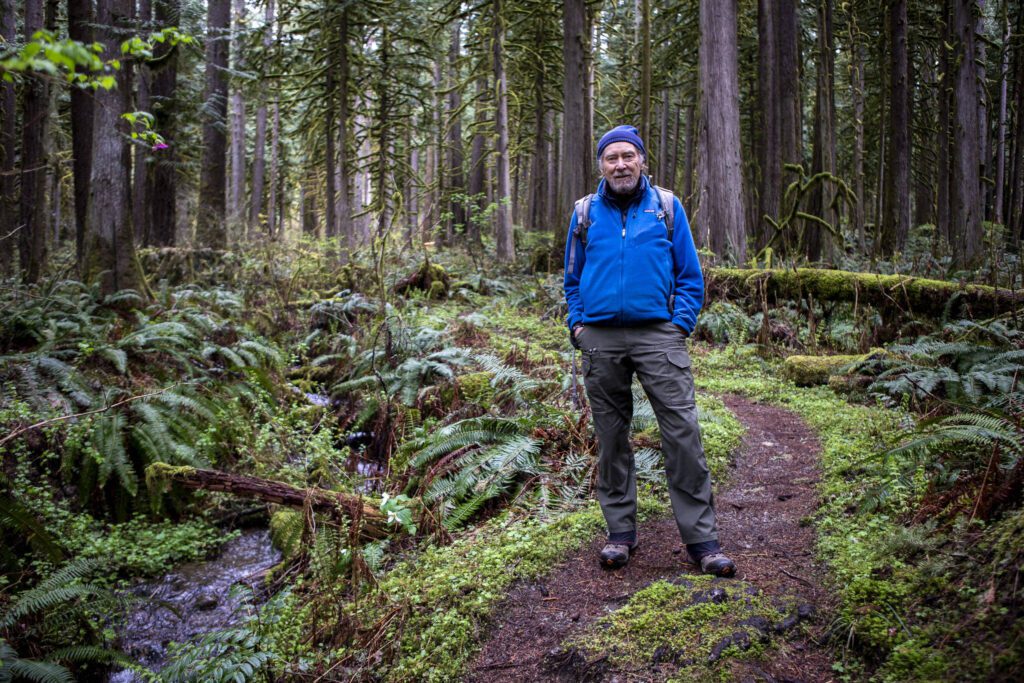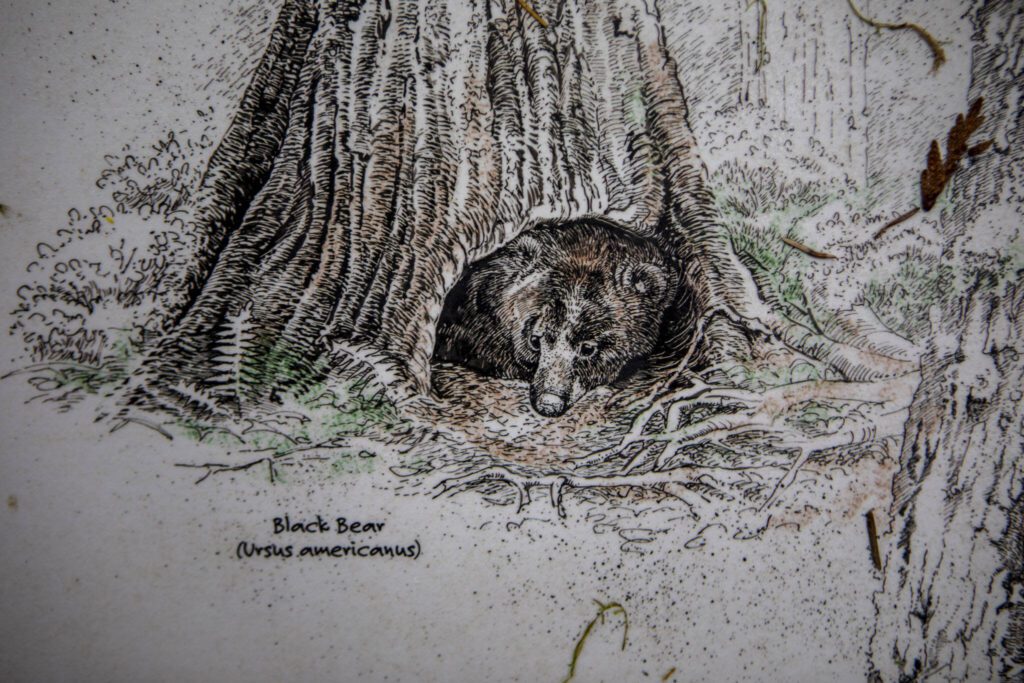DARRINGTON — Once again, grizzly bears will soon roam the North Cascades, where biologists have considered them extinct for decades.
On Thursday, the National Park Service, in partnership with the U.S. Fish and Wildlife Service, announced a decision to transport grizzlies from British Columbia, Montana or Wyoming in hopes of restoring the historic population in northern Washington. The agencies said there isn’t a start date yet for relocation.
Under the plan, staff from the Park Service and Fish and Wildlife will release three to seven bears every year, until there is a population of 25 bears. The agencies expect to release 11 more bears after that, with the hope the population could reach 200 bears in a century.
“I’m very thrilled that this is going to happen,” said Chris Servheen, a retired grizzly recovery coordinator for U.S. Fish and Wildlife, on Thursday. “We have very few chances to be stewards for grizzly bears in the lower 48 states.”
Relocated grizzlies will have a special designation under Endangered Species Act section 10(j). The rule will allow officials to relocate or kill any bears in conflict with humans.
The bears will likely be released:
• In a northern portion of North Cascades National Park;
• In the southern section of the national park that extends into the eastern edge of Mount Baker-Snoqualmie National Forest;
• Or in a northern section of the remote Pasayten Wilderness.
The federal agencies’ decision was over a decade in the making. Officials began drafting an Environmental Impact Statement in 2014, but the Trump administration halted the process in 2020. In 2022, the Park Service and U.S. Fish and Wildlife reinitiated the plan.
‘It’s gratifying’
This past fall, officials hosted public comment sessions in Darrington, Okanogan, Newhalem and Winthrop, where residents voiced opinions on grizzlies in neighboring forestland. More than 12,000 people submitted comments on the North Cascades grizzly bear proposal.
At the Darrington meeting, over 100 locals packed the local high school’s auditorium — many vehemently opposed to the idea.
Shawn Yanity, a former chair of the Stillaguamish Tribe, said tribal members are worried about how bears may jeopardize already-threatened Chinook salmon populations.
“We need to sustain our culture,” Yanity said. “We need to sustain our way of life.”
The chosen grizzlies would be descendants of inland animals — omnivores with largely plant-based diets.
Park Service and Fish and Wildlife officials consulted the National Marine Fisheries Service while drafting the grizzly bear proposal, and the agency determined reintroduced grizzlies would likely not jeopardize any threatened salmon populations.
Bears spend four to five years teaching their young how to find food. And catching salmon is a learned behavior.
“If mom hasn’t had that experience, it’s less likely that the cubs are going to gain it,” said Bill Gaines, a wildlife ecologist and the executive director of the Washington Conservation Science Institute.
In the early 1990s, Gaines helped map habitat in the North Cascades to understand if grizzly recovery was feasible, before federal agencies committed to a plan.
He and other members of the team shared their findings with a panel of grizzly experts and determined the North Cascades ecosystem provided enough food, space and security to support grizzlies.
For Gaines, “it’s gratifying” to hear about the federal decision to recover grizzlies in Washington.
“A few years back, I was rather skeptical I’d see this in my lifetime,” he said.
Once reintroduction begins, officials will need to communicate “what’s happening on the ground,” he said. The National Park Service plans to publish updates on the park website and notify the public of plans as they develop, federal agencies said in a press release Thursday.
Bears chosen for the plan will be captured in culvert traps. From there, bear handlers will drive the animals to one of the designated staging areas, to be prepared for release miles away at other sites in the remote wilderness.
The National Park Service and U.S. Fish and Wildlife outlined seven potential staging areas in the Final Environmental Impact Statement: about 10 miles east of the Darrington Ranger Station; near the North Cascades National Park Visitor Center; next to Diablo Lake; by Ross Lake, near the Washington-Canada border; and three places in the Okanogan-Wenatchee National Forest.
The staging areas are previously disturbed, non-wilderness spaces big enough for a helicopter, truck and transportation equipment. From there, helicopters will take the bears to release sites as quickly as possible, depending on weather conditions and helicopter availability.
In the 1800s, an estimated 50,000 grizzlies roamed throughout western North America. By the 1930s, the population plummeted to fewer than 500, largely due to humans killing bears and destroying their habitat.
‘Good science and good ethics’
In 1996, Paul Paquet saw the last verified grizzly bear in the North Cascades. While hiking along the Pacific Crest Trail near Glacier Peak, the Canadian researcher spotted a female grizzly indulging on a feast of huckleberries about 55 yards away in Mount Baker-Snoqualmie National Forest.
Before his encounter, he served on grizzly bear research committees and authored reports about the omnivore’s populations in Canada. He recognized the tracks as distinctly those of a grizzly.
Regarding Thursday’s decision, Paquet said: “This is a case of good science and good ethics.”
The National Park Service, as well as Fish and Wildlife, considered the welfare of the bears in their plan, he said. He commended that officials will scope out the remote areas where bears will likely be released to ensure no people are nearby.
Some hikers have claimed to see grizzlies near Marblemount within the past decade, though biologists dispute those sightings — or have found them impossible to confirm.
In 2011, a hiker submitted a photo of a bear trotting along a ridge south of the North Cascades Highway. The bear appeared to have a shoulder hump — a notable feature for a grizzly — which led biologists to initially confirm the sighting.
But upon seeing more photos of the same bear, biologists reversed their decision.
A bear’s color and size often convince eyewitnesses they’ve seen a grizzly, but biologists say these aren’t reliable identifying characteristics. Black bears are often brown, cinnamon and blonde. And in some cases, they are also the same size and height as grizzlies.
A grizzly bear’s claws tend to be at least 2 inches longer than those of a black bear. Grizzly bear ears are also short and round, while black bear ears are tall.
The state Department of Fish and Wildlife requires hunters to complete a bear identification test to prevent unintentional grizzly deaths.
It could take decades for wildlife biologists to detect a notable grizzly population in the Cascades.
Much of the North Cascades region is ancestral land of the Upper Skagit Indian Tribe.
“The Upper Skagit celebrates this decision for the great bear, the environment and everyone who desires a return to a healthy Indigenous ecosystem,” said Scott Schuyler, policy representative for the tribe, in a press release from Conservation Northwest. “We urge the agencies to move forward and put paws on the ground so the recovery may begin.”
Leaders of the Sauk-Suiattle Indian Tribe have been opposed to grizzly bear reintroduction, largely due to concerns about the bears affecting salmon runs.
“We think it’s unfortunate that, despite all the opposition, it was a decision they decided to move forward with,” said Nino Maltos II, chair of the Sauk-Suiattle Tribe. “It makes us question what the public commenting period is for.”
Still, he said the tribe wants to remain involved in the reintroduction process and ensure that federal agencies are transparent about the relocated bears’ movements.
“If we can’t stop it from happening, we want to help make this structured,” said Maltos II. “Hopefully, this turns out the way they anticipated it.”
Ta’Leah Van Sistine: 425-339-3460; taleah.vansistine@heraldnet.com; Twitter: @TaLeahRoseV.
Talk to us
> Give us your news tips.
> Send us a letter to the editor.
> More Herald contact information.
